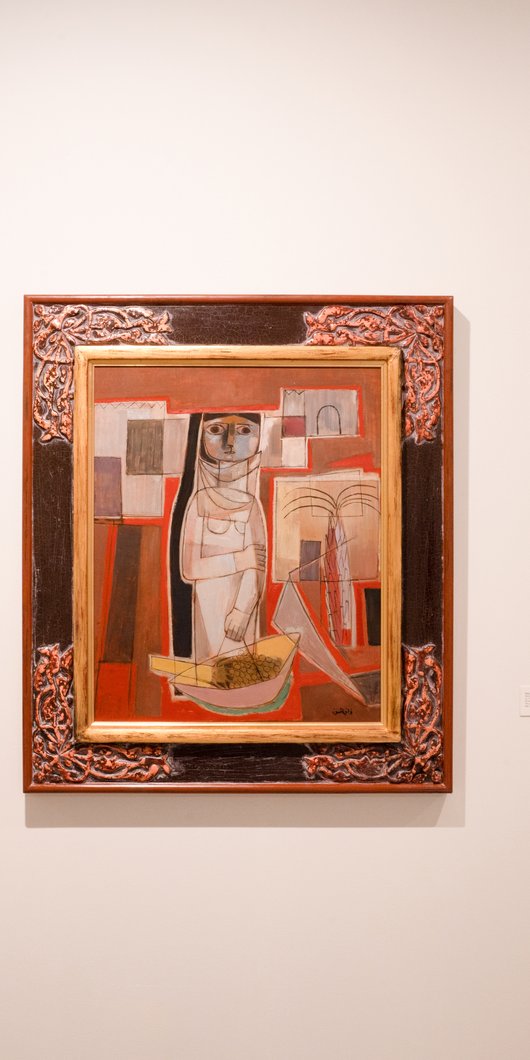Faiq Hassan (1914–1992) was one of the very first art students in Iraq, benefitting from a government scholarship to study abroad in Paris in 1935. Three years later, in Baghdad, he was appointed director of the newly opened Ma’had al-Funun al-Jamila (Institute of Fine Arts), heading it until 1962. Playing such a significant role, Faiq Hassan was consequently part of the generation of ‘al-Ruwwad’ (the Pioneers), a group of artists recognised for implementing an innovative artistic vision in the country.
Although Hassan didn’t officially join many of his peers in the Jama’at Baghdad lil-Fann al-Hadith (The Group of Baghdad for Modern Art) when it was founded in 1951, he did adhere to the collective’s artistic concept of istilham al-turath (seeking inspiration from the heritage), as seen in this painting, entitled Woman with a Branch of Dates and dated between 1950 and 1959.
Currently on display in Gallery 8 as part of Mathaf’s permanent collection, the artwork reveals an Iraqi woman in an abstract depiction of a village. Standing in the middle of the composition, she is wearing a black chador and is holding a basket in which she has put a branch of dates. Depicting daily life of people in the countryside was characteristic of Hassan’s practice, which also included experimentations with the combination of modern subjects and ancient aesthetics.

